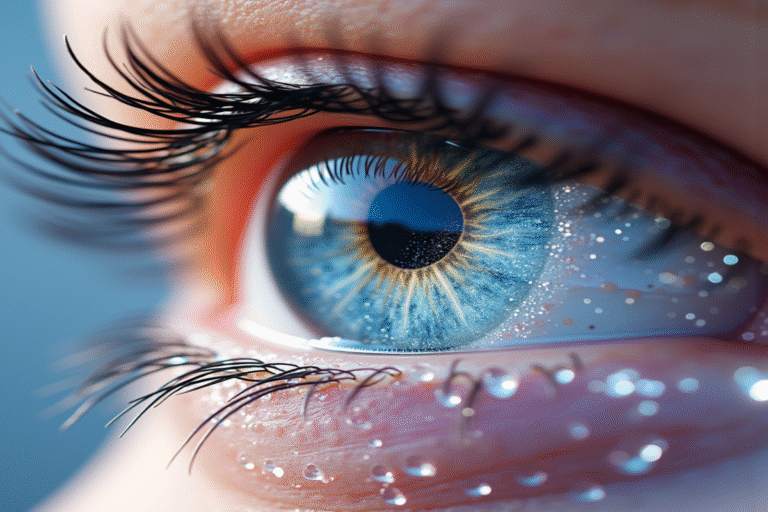Every time you blink – which happens about 15,000 times a day – you’re activating one of the body’s most elegant self-cleaning mechanisms. Your tears aren’t just for crying; they’re constantly at work maintaining your eye health through an intricate biochemical process that rivals sophisticated cleaning systems.
The Three-Layer Symphony of Tears
Your tears aren’t just salt water – they’re a complex three-layer formula perfectly engineered for eye maintenance:
- The Mucin Layer – The innermost layer anchors tears to your eye surface, ensuring even coverage. Without it, tears would bead up like water on a waxed car!
- The Aqueous Layer – The middle watery layer (making up most of your tear volume) contains a remarkable mix of antibacterial enzymes, electrolytes, proteins, and nutrients that nourish your cornea.
- The Lipid Layer – The outermost oily layer prevents evaporation and keeps your tear film stable. Think of it as nature’s sealant!
Your Personal Eye-Washing System
With every blink, your eyelids act like windshield wipers, spreading tears evenly across your eyes. This washing action sweeps away dust, allergens, and potential irritants before they can cause harm. What’s fascinating is how your tears move – they flow from the outer corner of your eye toward the inner corner, carrying debris to tiny drainage ducts called puncta.
These puncta – which are so small they can barely fit a human hair – drain about 1-2 milliliters of tears into your nasal cavity daily. That’s why your nose runs when you cry!
The Chemical Warriors Within
Perhaps most impressive is your tears’ antimicrobial arsenal. They contain lysozyme, an enzyme so powerful it can destroy bacterial cell walls on contact. This natural antibiotic is remarkably effective – in laboratory tests, it can kill bacteria within minutes.
Tears also contain lactoferrin, which starves bacteria of the iron they need to grow, and immunoglobulins that tag foreign invaders for destruction by your immune system. It’s like having a microscopic security team constantly patrolling your eyes.
Not All Tears Are Created Equal
Scientists recognize three distinct types of tears, each with special functions:
- Basal tears – The everyday tears that lubricate and nourish (on average, you produce about 5-10 milliliters daily).
- Reflex tears – The extra tears released when irritants strike (these contain more antibodies).
- Emotional tears – Uniquely human tears that contain stress hormones and natural painkillers, literally helping to soothe emotional pain.
The Optical Benefits
Beyond cleaning and protection, tears create a perfectly smooth surface over your cornea – essential for clear vision. Without this tear film, light wouldn’t refract properly through your eye. Think of tears as nature’s perfect contact lens, constantly refreshed and maintained.
The next time you feel that familiar moisture in your eyes, remember you’re experiencing one of nature’s most sophisticated self-maintenance systems – a remarkable combination of mechanical cleaning, antimicrobial defense, and optical engineering all packed into a solution that’s mostly water. Our eyes may be windows to the soul, but tears are the careful caretakers that keep those windows crystal clear.





